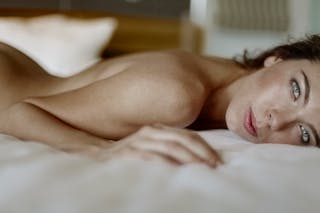Creating An Asexual Character For TV Showed Me We Have A Way To Go
Representation in television is always a hot topic, but when it comes to accurately portraying asexuality, the challenges can be even more complex. It's important to showcase the diversity of human experiences, but finding the balance between education and entertainment is no easy feat. With the right approach and understanding, television has the power to shed light on this often misunderstood orientation. For more insights on navigating sexual and romantic relationships, check out this helpful resource.
When it comes to representation on television, the LGBTQ+ community has made significant strides in recent years. We've seen more diverse and inclusive characters than ever before, which is a step in the right direction. However, as someone who identifies as asexual, I've noticed that there is still a significant lack of representation for asexual individuals on TV.
Experience the luxury of Sheffield's top escort agency and indulge in a truly unforgettable experience.
As a writer for a top local dating platform, I understand the importance of seeing oneself reflected in the media. It not only validates our experiences but also helps to educate others about the diversity within the LGBTQ+ community. When I first encountered an asexual character on a popular TV show, it was a moment of both excitement and disappointment. While it was a step in the right direction, it also highlighted just how far we have to go in terms of accurate and meaningful representation.
If you're looking for a comparison between Match and Zoosk, check out this informative article and see which one is the best fit for you.
The Rise of Asexual Representation
Explore sensual delights without penetration and discover new ways to enhance intimacy and pleasure in your relationship.
In recent years, there has been a growing awareness of asexuality, thanks in part to the efforts of asexual activists and advocates. Asexuality is a sexual orientation characterized by a lack of sexual attraction to others, and it falls under the umbrella of the LGBTQ+ community. Despite its validity, asexuality is often misunderstood or overlooked, both in real life and in the media.
Thankfully, there have been some attempts to include asexual characters in TV shows, albeit few and far between. One notable example is Todd Chavez from the animated series "BoJack Horseman." Todd is one of the few asexual characters to be portrayed on television, and his storyline explores his journey of self-discovery and acceptance. While it's a step in the right direction, it's important to note that Todd's representation is just a drop in the bucket compared to the vast array of sexual orientations depicted on TV.
The Importance of Accurate Representation
Accurate and meaningful representation is crucial for asexual individuals, as well as for the broader LGBTQ+ community. Seeing oneself reflected in the media helps to combat feelings of isolation and invisibility. It also serves to educate the general public about the diversity of human sexuality, fostering greater understanding and acceptance.
For those of us on the asexual spectrum, seeing a character like Todd Chavez is a step in the right direction, but it's not enough. Asexuality is a nuanced and complex orientation that deserves more than a token character. We need to see a range of asexual experiences depicted on TV, from aromantic asexuals to those navigating romantic relationships. Only then can we begin to break down the misconceptions and stereotypes surrounding asexuality.
The Challenges of Asexual Representation
One of the biggest challenges in accurately representing asexuality on TV is the lack of understanding and awareness surrounding the orientation. Asexuality is still a relatively unknown and misunderstood concept, even within the LGBTQ+ community. This lack of awareness makes it difficult for writers and producers to authentically portray asexual characters and their experiences.
Additionally, there is a pervasive belief that sex and romance are essential components of storytelling, making it challenging to create compelling narratives for asexual characters. However, this is a narrow-minded approach that fails to acknowledge the richness and complexity of asexual experiences. By exploring the emotional, romantic, and platonic aspects of asexual characters' lives, writers can create meaningful and impactful storylines that resonate with a diverse audience.
Moving Forward
As we continue to push for greater representation and inclusivity in the media, it's essential to advocate for more accurate and meaningful depictions of asexuality. This means challenging outdated stereotypes and misconceptions, and actively working to create space for asexual voices and experiences in storytelling.
For individuals working in the entertainment industry, it's crucial to educate oneself about asexuality and consult with asexual individuals to ensure authentic and respectful representation. By doing so, creators can help to break down barriers and increase visibility for asexuality, ultimately creating a more inclusive and diverse media landscape.
As a writer for a top local dating platform, I believe that accurate and meaningful representation of asexuality is not only essential for asexual individuals but for society as a whole. By embracing the diversity of human sexuality, we can foster greater understanding, empathy, and acceptance, ultimately creating a more inclusive and welcoming world for everyone.
- https://hookup.fu-direct.net/posts/anal-sex-positions-youre-going-to-want-to-try/
- https://sexting.getweps.com/posts/things-to-do-for-may-bank-holiday-how-to-have-a-sex-marathon/
- https://online-hookup.fu-direct.net/posts/5-essential-sex-positions-you-can-do-without-leaving-the-sofa/
- https://sexting.getweps.com/posts/pansexual-celebrities-19-famous-people-who-are-pansexual/
- https://datingguide.campsupernow.com/posts/my-best-sex-ever-was-in-a-sauna-in-lapland/
- https://hookupsites.campsupernow.com/posts/every-sex-toy-in-sex-education-season-4/
- https://flirting.themountaintopplay.com/posts/30-breakup-texts-to-dnd-any-relationship/
- https://personals-website.timebombrecordings.com/posts/wonder-woman-poster-has-fans-thinking-shes-gay-or-bisexual/
- https://singles-website.themountaintopplay.com/posts/how-to-use-bullet-sex-toys/
- https://dating-blog.themountaintopplay.com/posts/reverse-cowgirl-reverse-cowgirl-sex-position-tips/
- https://flirting-online.timebombrecordings.com/posts/beach-sex-16-beach-sex-stories/
- https://meet-women.getweps.com/posts/lubricant-best-sex-lube/
- https://dating-for-free.getweps.com/posts/sex-after-coming-out-as-asexual/
- https://dating-guide.themountaintopplay.com/posts/discreet-vibrator-best-discreet-sex-toys/
